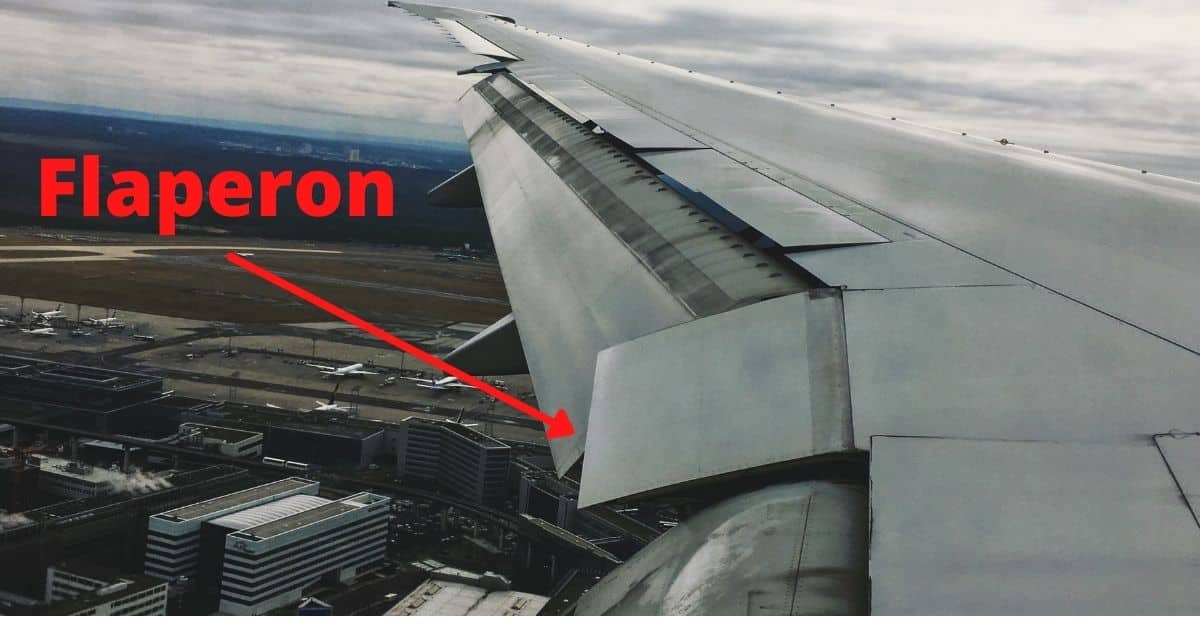On fixed-wing aircraft, there are numerous aerodynamic devices installed which serve a number of functions. These functions include the generation of lift and drag across the airfoil.
Two of the aerodynamic devices found on aircraft are flaps and ailerons. Flaps being lift-generating devices in which the chord of the wing can be changed while also increasing wing surface area.
Ailerons are the control surfaces used to control the roll of the aircraft. They adjust the lift-drag proportion across each wing in order for the aircraft to bank in the desired direction.
In some aircraft, ailerons are incorporated into the spoiler portion of flight control surfaces. These aerodynamic devices are known as spoilerons.
Similar to the combination of spoilers and ailerons to form spoilerons, flaperons integrate the flap and aileron controls into one control surface. Flaperons are installed on the trailing edge of the wing.
Flaperon devices can be found on Boeing aircraft such as the B767/777/787.
Flaperons vs Flaps
Aside from integrating the ailerons into the same control surface as the flaps, flaperons provide extra control authority at lower manoeuvring speeds for aircraft. This is particularly true in relation to the roll response and authority available from flaperon devices.
When deployed, flaperons also offer improved stability for aircraft at lower speeds.
These characteristics are particularly effective in crosswind landing conditions in which moderate roll input is required to counteract the crosswind component.
Stall speed is also reduced when flaperons are installed on an aircraft. This is particularly beneficial for conducting approaches, in which lower approach speeds can be flown.
The composite construction of flaperons found on aircraft such as the Boeing 777 also makes them favourable in relation to fuel economy. This is due to their light weight yet durable characteristics.
The extent of flaperons installed on the wing of aircraft directly impacts the above features. This specifically refers to the location of the flaperons on the wing along with the size installed.
To avail of optimal control authority and stability, flaperons are commonly found on the mid-section of the wing.
Flaperons also act as thrust gates on Boeing aircraft, in which they prevent the mixing and interference of airflow between the engine exhaust and the wing. If conventional flaps are installed behind the exhaust, this can lead to a high increase in drag, requiring higher take off and approach speeds.
This limits an aircraft’s landing and take off performance as additional runway length will be required.
Flaps
In contrast to the features of flaperons, conventional flaps are separate devices installed on the trailing edge of the wing. They work independently to that of ailerons.
While flaps provide a certain degree of stability, it is significantly less to that provided by the deployment of flaperons.
Flaps are typically installed anywhere from the wing root out to the outer portion of the wing. They consume a greater surface area to that of flaperons.
Read More:

After visiting more than 60 countries, I have probably been on every type of plane there is and visited countless airports. I did my very first international solo trip to South Africa at the age of only 16 and haven’t really stopped traveling since.
Despite the adventurous travel itch, I do have a nerdy side as well – which is satisfied by writing about all things aviation “too boring” for my regular travel blog.
